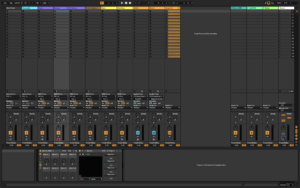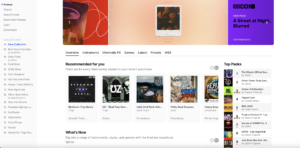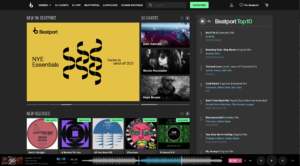Learning to Produce EDM in 2022
3 years ago

Learning to Produce EDM in 2022
With 2022 upon us, there’s never been a better time to get started producing Electronic Dance Music. As I think back over the past few years that I’ve been producing, I realized that I could have gotten to the place where I am now faster, if I had some better guidance when I was starting out. While the subject of producing music of any genre can be complex, I wanted to come up with some tips to give future producers some things to think about as they look to start producing.
Tip 1: Master your DAW
A digital audio work station (DAW) is a piece of software that turns your computer into a recording studio. When I started producing, it was tempting to want to jump right in and start making music, but I totally recommend taking some time learning as much as you can about the DAW of your choice. This could be flipping through the manual, watching Youtube videos, or taking an online course. I know that everyone learns differently, but personally I recommend that everyone at least flip through the manual for their DAW. When you learn how the stock plugins work for a particular DAW you’ll be able to apply that same knowledge to third-party plugins. It’s also helpful to learn the common keyboard shortcuts for your DAW to help shorten your workflow. Some of the big DAWs on the market are Ableton Live, Logic Pro, Bitwig Studio, and Pro Tools.

Ableton Live 11
Tip 2: Use royalty-free samples and presets
When I started making music I thought that it was “cheating” to use samples from sample packs or even presets for synths. I want to say that this is 100% not true. If you have royalty-free samples that work for your track, use them! At the very least, you should be using samples and song starters. Additionally, in the beginning, new producers should be using professionally made synth presets as starting points for sound design. It’s easy to tweak parameters of existing presets or to layer synths with different presets to come up with new sounds. I recommend getting a subscription to Splice.com to find great samples and presets for your productions.

Splice.com
Tip 3: Use reference tracks
One of the best ways to get inspired to create a track is to listen to other Artist’s tracks. The recommendation here is to import a song with a similar style into your DAW and map out the main elements from that track. Think about the way you would outline a paper before writing it. It’s the same for a song. Find your favorite track on Beatport or iTunes and figure out where that artist put their drops, breakdowns, and verses. Again, this is not cheating. You should totally plan to use the same structure as songs in the genre you want to make while you are learning how to produce.

Beatport.com
Tip 4: It’s OK to reuse sounds
When I first started out, I thought that I had to switch sounds for each song when the reality is that you should reuse presets and samples that you like for future tracks. Not only does this keep the workflow going, but it also helps you develop a signature sound. As I built my sound library, I found that organizing my sample folders made it fast and easy to find the sounds that I needed for my next track. It was also helpful to save the sounds that I liked or created in a favorites folder. Try creating kits of your favorite drum samples so you can access them quickly. For example, pick about 10-15 kick, snare, High Hat, and percussion samples that you regularly use them. .
Tip 5: Focus on one genre initially
Finally, try focusing on one genre as you begin your music making journey. This will make it a little bit easier to determine a musical direction or even learn from other songs doing well in that genre. Additionally, it will make it a little easier when you are pitching your song to playlist owners. When I was first starting out, I wanted to make every genre that I liked and was listening to. The reality is you should become a master of one genre and learn from that. Then branch out to other genres as your skills improve.
Honorable mention would be to make sure you have a good listening environment. This is usually the first chapter on any book on mixing and eventually mastering, however I think that turning your bedroom or a spare room into a quality listening environment should be something you do overtime. This will require you being in the right location in the room as well as some acoustic treatment.
Music production can be a fun and rewarding experience. Even though it’s a complex topic, it can be very fun to talk about music production. It’s exciting that some of you will be diving into the EDM community in the coming year, and I wish you the best. I hope these tips have been helpful for you. Good luck with producing music in the new year!
-Robot Mayhem
Check me out on Spotify